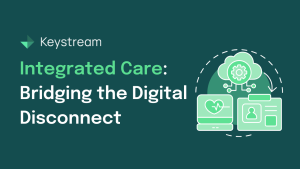13.07.2023
The Importance of Risk and Readiness Assessments – Setting the Stage for Success
Introduction
Implementing a new Electronic Patient Record (EPR) system within the NHS is a huge task that requires meticulous planning and preparation. One critical element, often overlooked, is the importance of a comprehensive risk and readiness assessment for the training workstream. Let’s look at why this is crucial and what it should encompass.
Capacity and Capability
Understanding the current state of the incumbent clinical systems training team’s capacity and capability is the first step. How many trainers do you have, and what is their experience level? Do they have knowledge of the new EPR system? Are there enough resources to cover all the training needs? An accurate understanding of your current situation allows you to identify any gaps early and start addressing them. You may decide that you need to outsource the training workstream to external SME’s with a track record of delivering comprehensive successful managed services, taking the risk element away from your organisation should your team require the necessary support and expertise.
ICT Training Space and Infrastructure
The physical infrastructure for training is just as important. Do you have adequate training rooms? Are they equipped with the necessary hardware and software? Can the rooms accommodate the expected number of attendees for hands on classroom training? Identifying potential issues with space and infrastructure early in the process helps ensure a smooth rollout.
Key Items in Scope
Clarifying what is in scope is paramount to effective planning. Which services, workflows, and user groups will be affected by the new EPR system? Each element can have unique training needs, which should be identified and addressed in your training plan.
EPR Programme Training Needs
There are numerous tasks to consider when planning an effective training programme for EPR deployments, below are 5 critical elements to consider:
- Resourcing and Recruitment: This encompasses not just hiring new trainers, but also ensuring current staff members are adequately trained. A good plan can help prevent staff shortages or knowledge gaps.
- Champion & Super Users: These individuals play a vital role in supporting their colleagues and facilitating the adoption of the new EPR system. It’s important to identify, recruit, and train these super users early in the process.
- Training Schedule: A detailed and well-thought-out schedule helps ensure all necessary training is completed in a timely manner, without overwhelming staff or disrupting normal operations. Having a comprehensive Learning Management System (LMS) is critical to the success of the implementation and should provide up to date Management reports on attendance and pass/fail rates.
- Domain Strategy: Your approach to domain setup in your training environment should mirror the live EPR system as closely as possible, providing staff with a realistic training experience. It is important to identify things that train domains cannot do and to ensure that you have the best possible workaround to showcase workflow that may not be available.
- Recommended Training Approach: Different staff roles may require different training methods. A thorough readiness assessment can help determine the most effective training approach for each group. The importance of delivering the correct blend of training should not be underestimated. While eLearning and other remote training delivery methods are increasingly important, it is equally critical to understand which complex workflows are best addressed with hands on exposure to the new system.
In Conclusion
A thorough risk and readiness assessment is more than just good practice – it’s a cornerstone of successful EPR implementations. It helps to identify potential roadblocks early, enabling you to devise solutions before they become problems. By ensuring the readiness of your Clinical Systems training capability, infrastructure, scope, and training needs, you are setting the stage for a successful EPR rollout.
Share your thoughts and experiences. Have you encountered specific challenges or discovered effective strategies?









